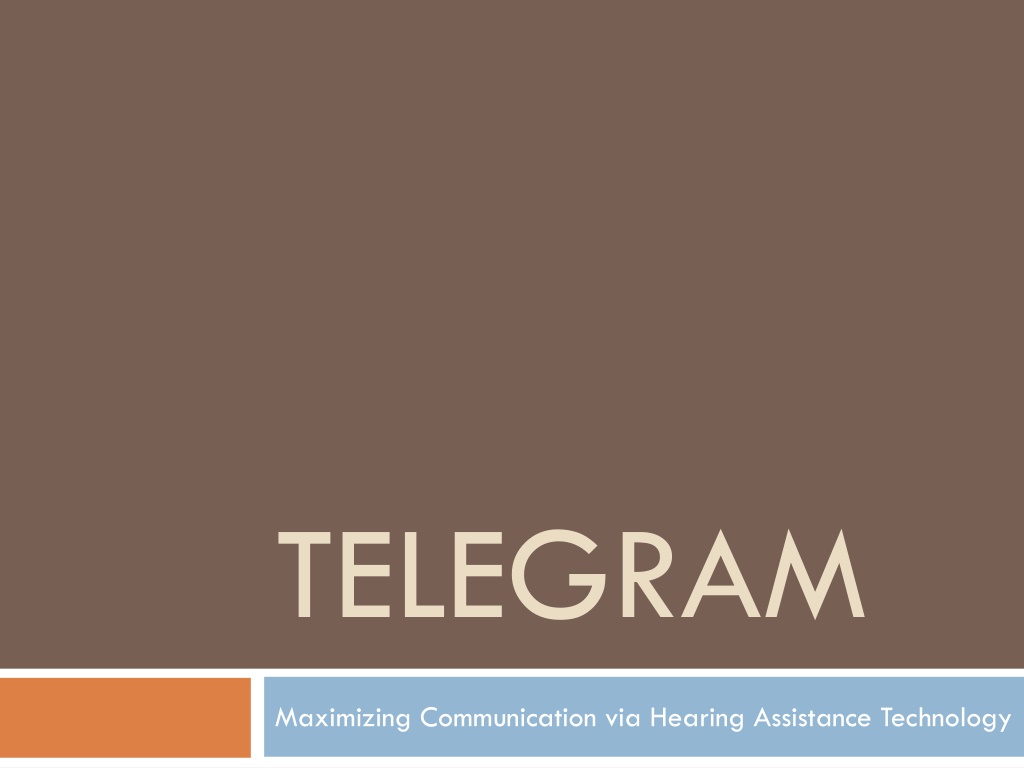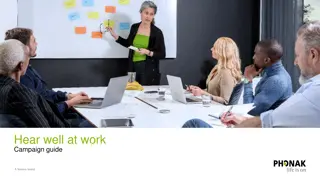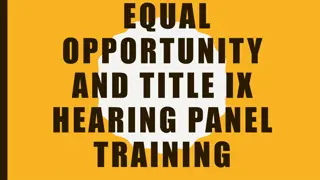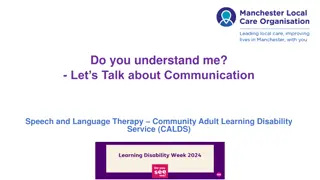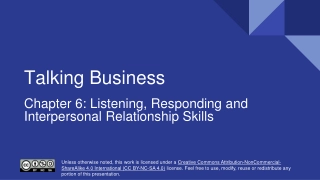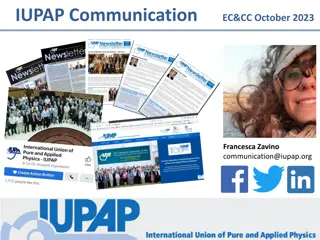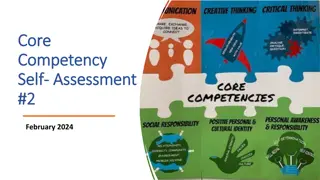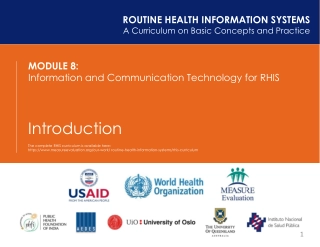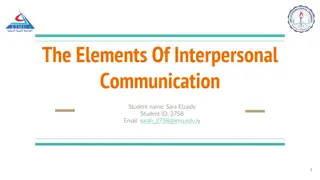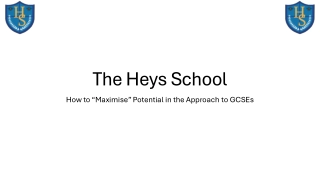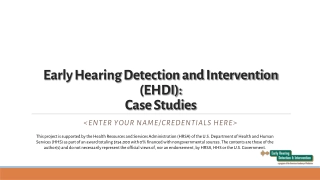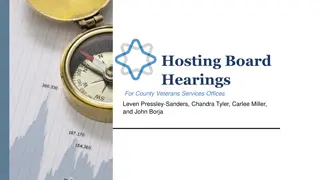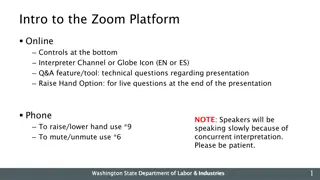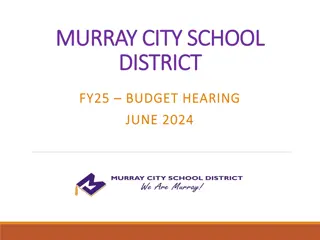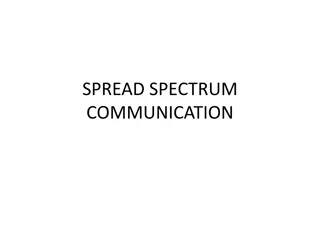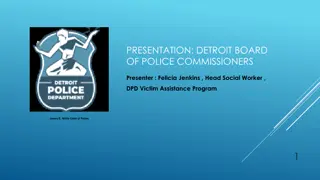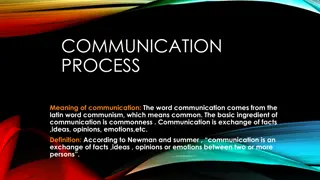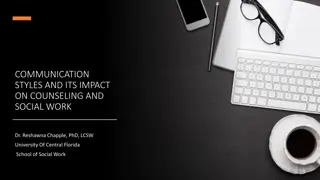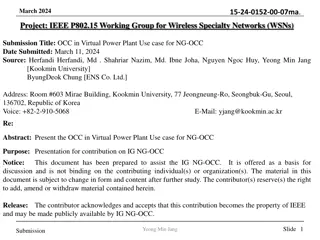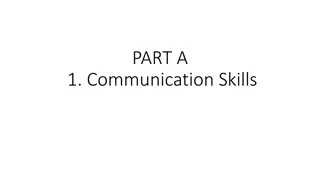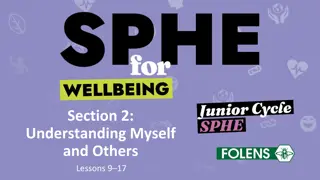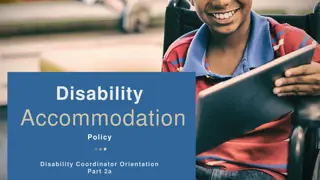Enhancing Communication Through TELEGRAM: Maximizing Hearing Assistance Technology
By utilizing the TELEGRAM approach, audiologists can assess communication needs comprehensively beyond hearing aids. The areas considered include telephone, employment, legal issues, entertainment, group communication, recreation, alarms, and family dynamics, leading to personalized recommendations for enhanced communication.
Download Presentation
Please find below an Image/Link to download the presentation.
The content on the website is provided AS IS for your information and personal use only. It may not be sold, licensed, or shared on other websites without obtaining consent from the author. Download presentation by click this link. If you encounter any issues during the download, it is possible that the publisher has removed the file from their server.
Presentation Transcript
TELEGRAM Maximizing Communication via Hearing Assistance Technology
Introduction There are many factors to consider in determining candidacy for amplification, and in many cases communication difficulties may be reduced through the use of hearing aids. However, there may be circumstances or situations in which hearing aids don t completely compensate for the loss. In these cases, other devices techniques, and/or strategies must be considered.
Goal : to maximize patients communication abilities. Audiologists are encouraged to broaden their scope of service beyond the hearing instrument to encompass their overall communication needs. How is this achieved? - the TELEGRAM
What is the TELEGRAM? Convenient prompt for audiologists to use with every client to ensure a comprehensive assessment of communication needs. Includes areas that must be considered in a broad investigation of theses needs. Plotted for efficient summarization of results just as the AUDIOGRAM.
TELEGRAM Areas that must be considered: Telephone Employment Legal issues Entertainment Group Communication Recreation Alarms Members of the family
TELEGRAM Interpretation Obtaining information regarding the client s functioning in each of these areas will lead to recommendations for additional technology or information that will maximize communication.
T - Telephone Are you having difficulty communication over the Telephone? Difficulty 1 = None 2 = Occasional 3 = Often 4 = Always 5 = Can t use the phone Use L to designate Landline and C to designate Cellphone.
E Employment/Education Are you having any difficulty with communication in your Employment or Educational environment? Difficulty 1 = None 2 = Occasional 3 = Often 4 = Always 5 = Stopped working
L - Legislation Do you know about Legislation that provides assistance for you to hear in public places or in hotels when you travel? Knowledge 1 = Vast 2 = Considerable 3 = Some 4 = Limited 5 = None
CS PA
E - Entertainment Are you having difficulty with hearing during Entertainment activities that you enjoy such as television, movies, or concerts? Difficulty 1 = None 2 = Occasional 3 = Often 4 = Always 5 = Stopped Going
C S TM PA
G - Group Are you having difficulty with communication in Group settings? Difficulty 1 = None 2 = Occasional 3 = Often 4 = Always 5 = Can t hear at all in groups
C S TM PA PM
R - Recreation Are you having difficulty with hearing during Recreational activities such as sports, hunting, or sailing? Difficulty 1 = None 2 = Occasional 3 = Often 4 = Always 5 = Stopped the activity
C S TM PA PM R R - Rock Climbing
A - Alarms Are you having difficulty hearing Alarms or Alerting signals such as the smoke alarm, alarm clock, or the doorbell? Difficulty 1 = None 2 = Occasional 3 = Often 4 = Always 5 = Stopped the activity Use S for Smoke Alarm D for Doorbell, and A for Alarm Clock
SC C S TM PA PM R R - Rock Climbing
M - Members Are you communicating with Members of your family? 1 = Live with Normal Hearing Adult 2 = Live with Young Children 3 = Live with Teenagers 4 = Live with Adult with Hearing Loss 5 = Live Alone Check all that apply
= SC C S TM PA PM R R - Rock Climbing
Why use the TELEGRAM? Using the combination of the AUDIOGRAM with the TELEGRAM would allow the audiologist to explain the sensory loss along with a broad assessment of communication needs that may be addressed with assistive technology.
Conclusion A new format for assessment like the TELEGRAM, will allow audiologists to routinely consider the need for Hearing Assistive Technology in clinical practice. For communication to be truly maximized in persons with hearing loss, the audiologists must consider beyond the audiogram and explore other devices, techniques, and/or strategies that will achieve this goal.
References Thibodeau, L. (2008). How TELEGRAMs can help patients Reach out and tough someone . The Hearing Journal, 61(3), 10-17. Thibodeau, L. (2004). Plotting beyond the audiogram to the TELEGRAM, a new assessment tool. The Hearing Journal, 57(11), 45-51.
